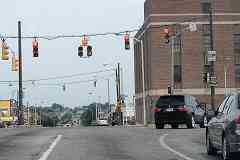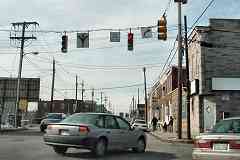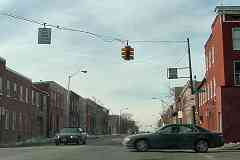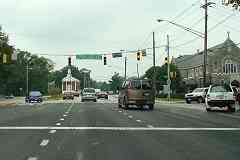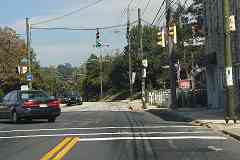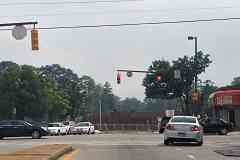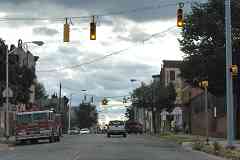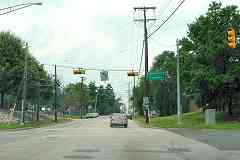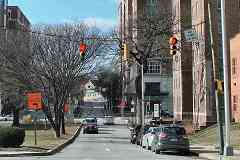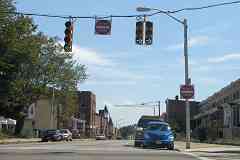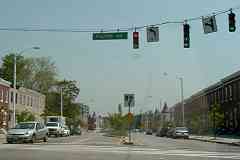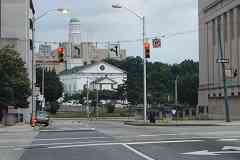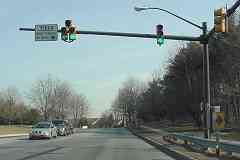|
Westbound on Lombard Street at Kresson Street... another No Turn On Red sign,
this time combined with red signal, green signal, and green arrow. I suppose
the two signal heads are an attempt at individual lane control, but in general
when a lane is turn only (as is the right lane), its traffic signal does
not display red while turning is allowed.
Side note: the circular O in "Only" is the hallmark of some of the oldest
Baltmore signage, likely dating to the 1950s. Newer "Only" signs employ a
font with a more oval letter O, similar to the O in the "No Turn On Red"
sign at left.
|
